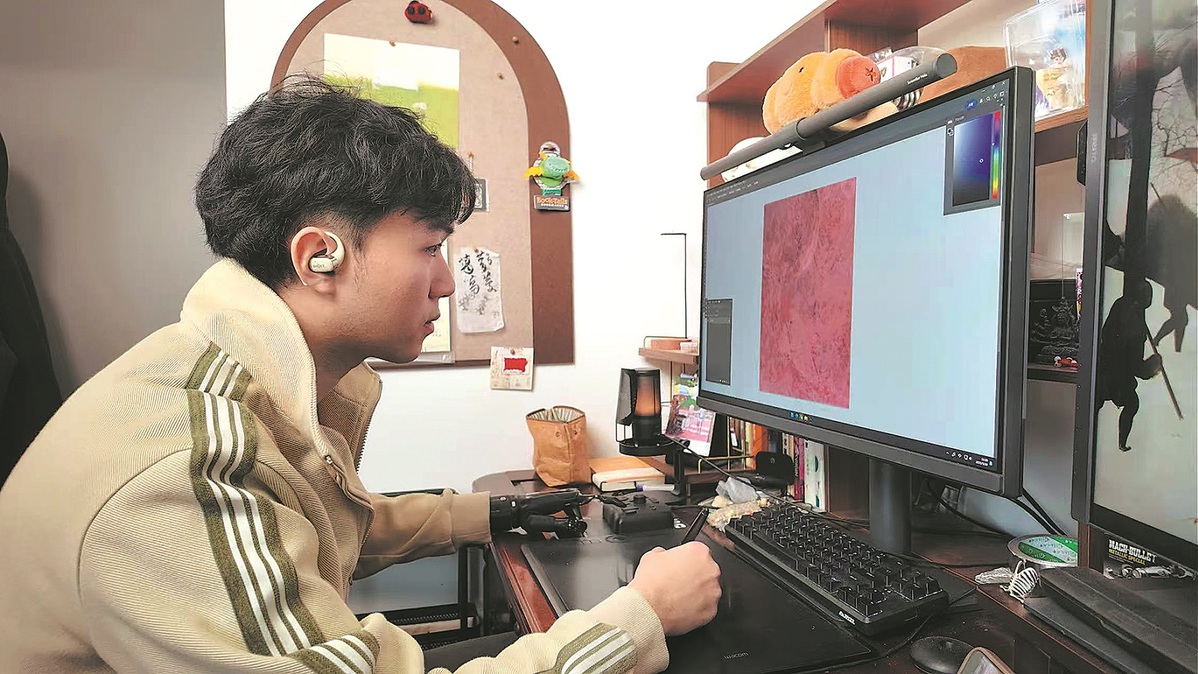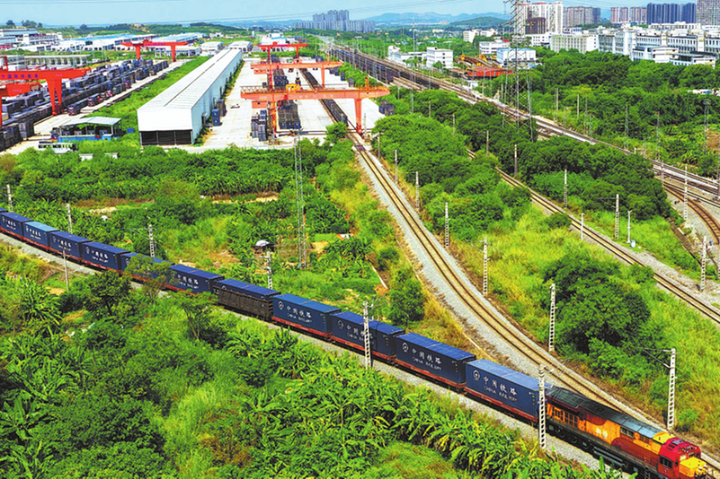Flesh embraces steel in new age of prosthetics aesthetics
Rise of 'cyberpunk' artificial limbs challenges society's perceptions of disability


In the passenger seat of a taxi, Sai Benyuan flexes the metallic fingers of his "new hand". Soft mechanical sounds — "shick-shick" — pulse from the black exterior of the prosthetic.
The driver sitting beside him suddenly grips the wheel tight. His eyes scan the glint from the shiny knuckles, lock on Sai's face, then drop back to the shifting mechanical hand. This uneasy exchange happens many times.
When the taxi nears its destination, the driver's nervous question breaks the silence: "Are you … a robot?"
Sai, a 28-year-old artist who graduated from the China Academy of Art in Hangzhou, Zhejiang province, replies with a quick "no". But for others, the answer is more nuanced.
In recent years, an increasing number of young people in China with disabilities have been stepping out in public equipped with "cyberpunk prosthetics".
In the world of science fiction and video games, "cyborg" heroes have long enthralled audiences with their shiny limbs and steely resolve. Now, that futuristic fantasy is crossing into real life — and redefining how society views disability.
Young amputees are proudly showing off their metallic arms and legs. Hashtags like "Flesh is weak, the machine ascends" and "Join the glorious evolution" go beyond expressions of gamer culture to declarations of identity, pride and belonging.
"In the 21st century, cyberpunk has entered the mainstream," Zhejiang Xingyuan Prosthetics & Orthotics Co wrote in a recent post. "It's a friendly term for prosthetic users — they are the true cyborgs of the world. Flesh meets steel, and that union is a badge of courage."
Infinite possibilities
Born without a left hand below the wrist, Sai grew up dreaming of something more. He was captivated by the anime character Astro Boy, who could shoot lasers from his fingertips. The notion of a mechanical hand took root early.
"I used to joke with my parents that one day, I'd have a laser-shooting hand," he recalled. "I waited all the way to adulthood."
In December, after nearly three decades, Sai received his myoelectric prosthetic — a sleek device weighing about 1 kilogram that responds to signals from his own muscles.
Myoelectric prosthetics detect faint electrical impulses from the muscles in the residual limb. These are then amplified, analyzed, and translated into precise movements of the fingers on his left hand, although he was born without one.
Before being fitted, Sai underwent extensive electromyographic testing at a rehabilitation center in Shanghai. Technicians mapped out which muscles controlled grasping, opening, and the nuanced motions of individual fingers.
Each signal had to be carefully calibrated — a process of delicate fine-tuning between machine and body. Once fitted, Sai began a month of daily training, teaching his brain and muscles how to command the device as if it were second nature.
Today, the results speak for themselves and erase many minor inconveniences that "people with two hands cannot imagine".
"One of the things that have beset me for a long time was that I could not applaud, not just for others, but for myself. But now, I am happy I can do both," Sai said.
On the streets, curious children sometimes glance at his metallic fingers. When they do, Sai lifts his cybernetic hand and waves.
As an artist, he has trained his new hand to paint, play the drums, and experiment with street dance.
"Human imagination of technology is limited. I cannot imagine what my hand will be like in the future, but I am sure the dream of playing the piano is not far off," he said.
As for the taxi driver's question on the boundary between humans and robots, Sai said: "The machine is an extension of my body, but my body is also an extension of 'me'."
The Olympics select the strongest humans, while the Paralympics showcase the most indomitable human spirits, he said. Perhaps in the near future, the Paralympics will undergo a transformation, evolving into a "Superhuman Olympics" that celebrates the perfect fusion of human willpower and technology, Sai said.
























